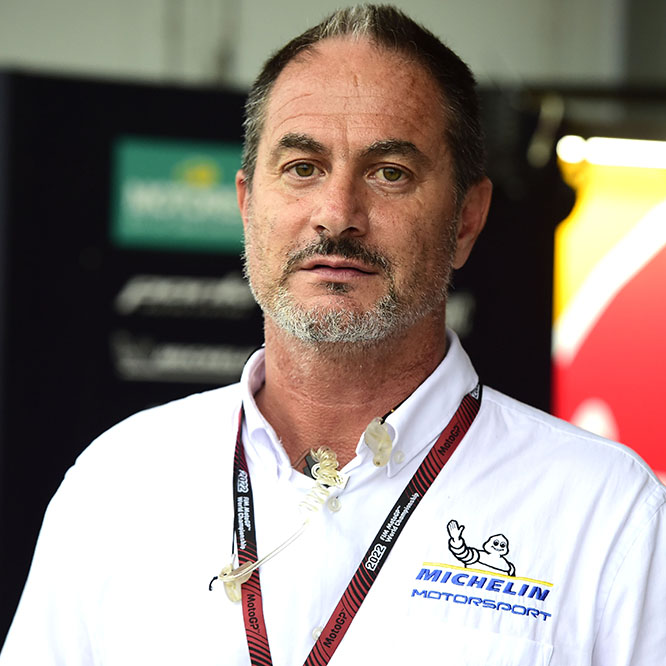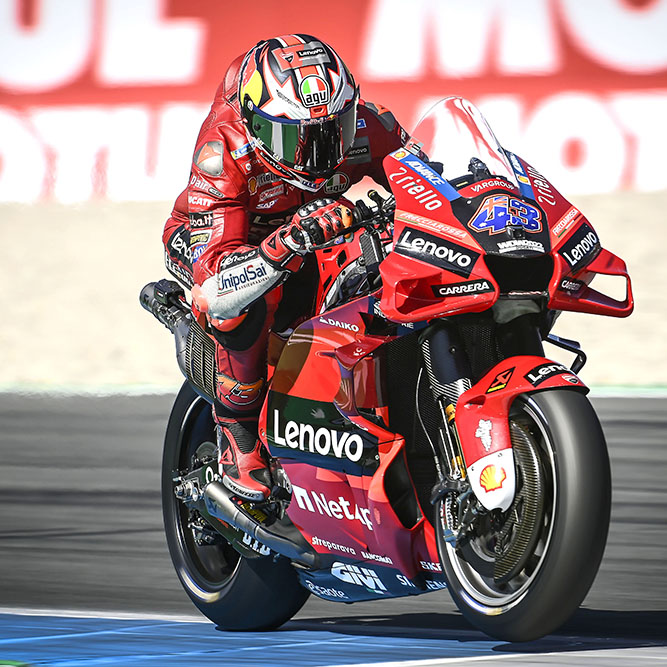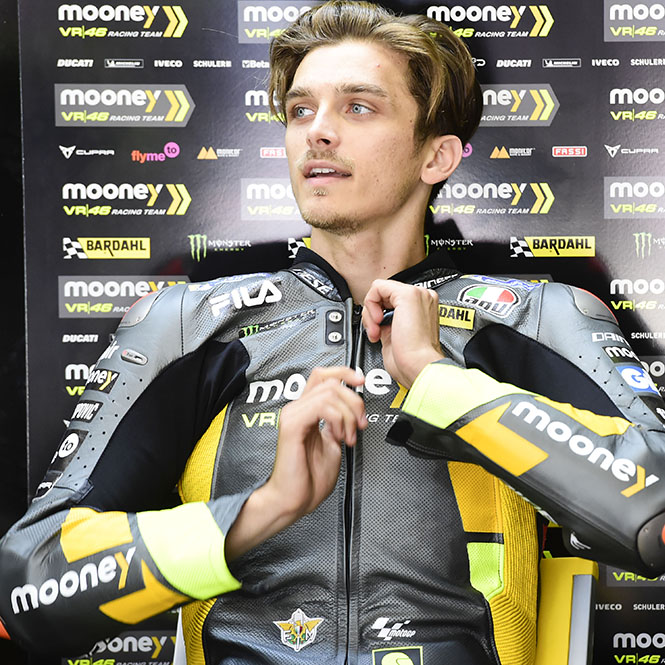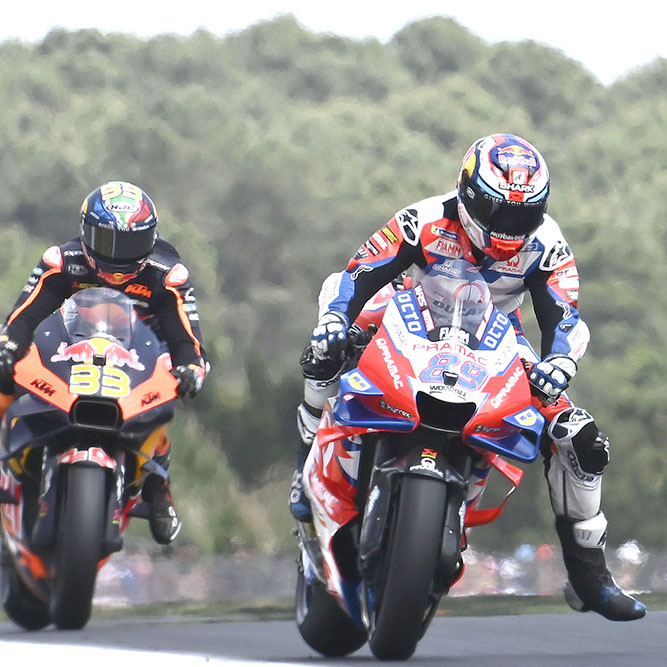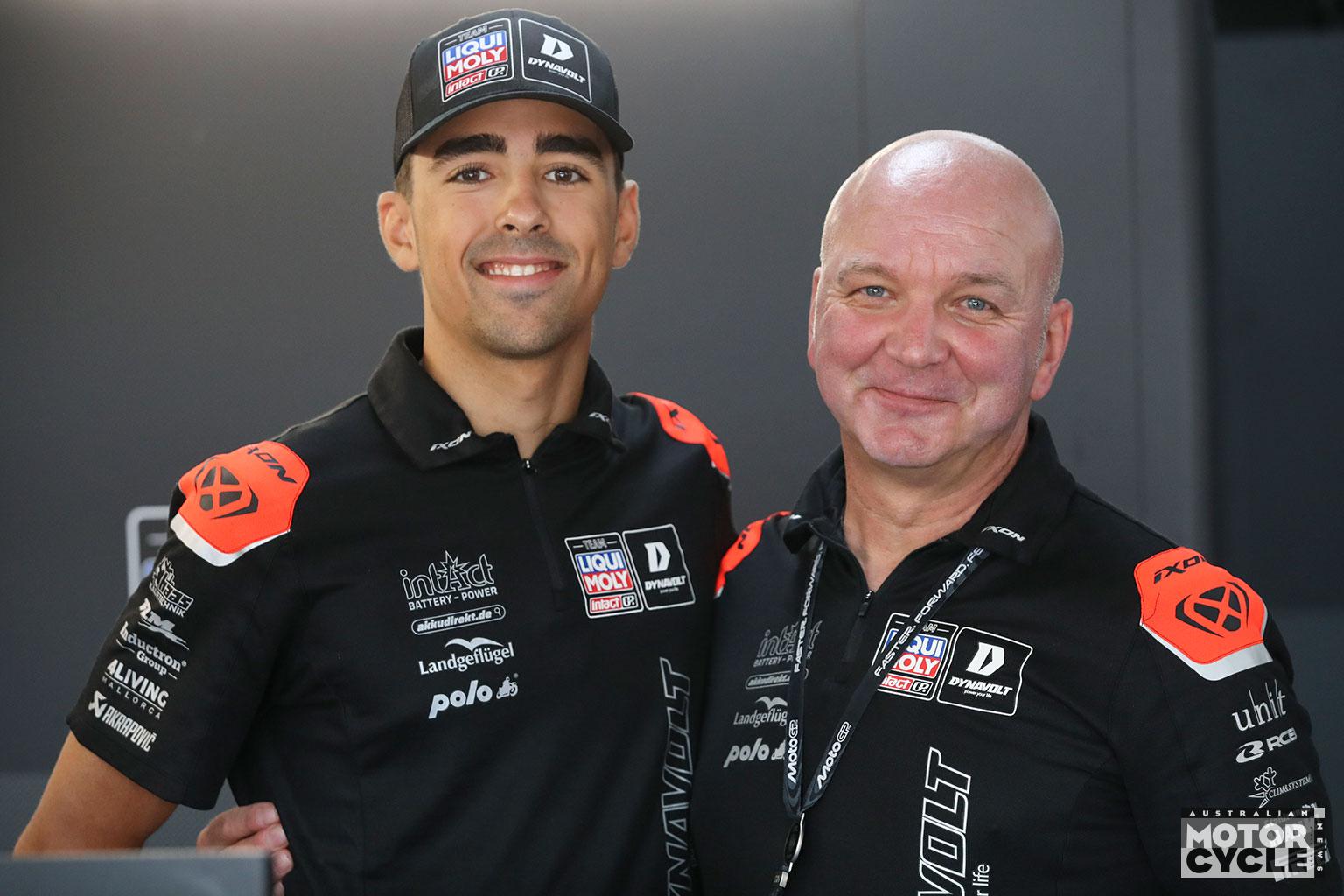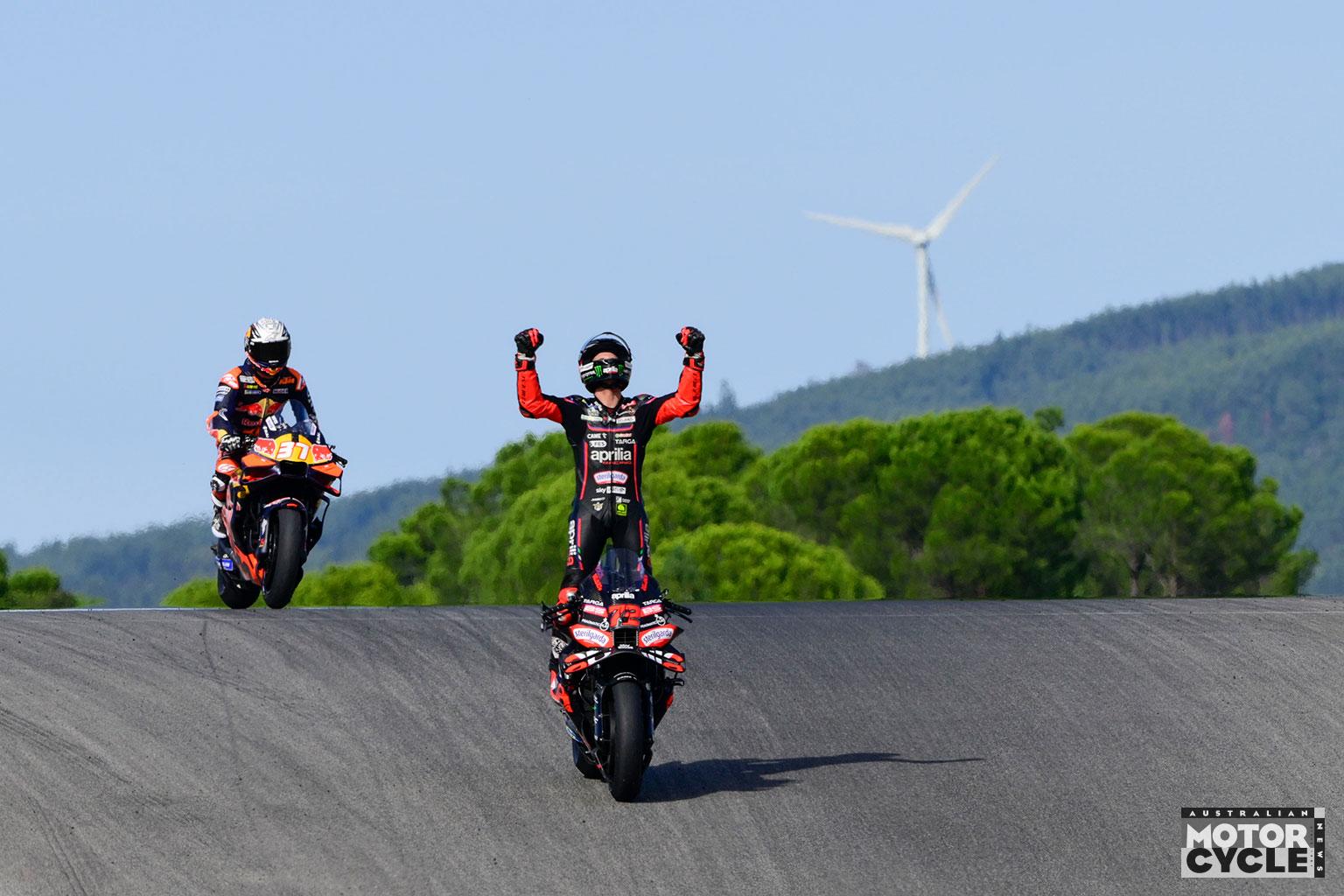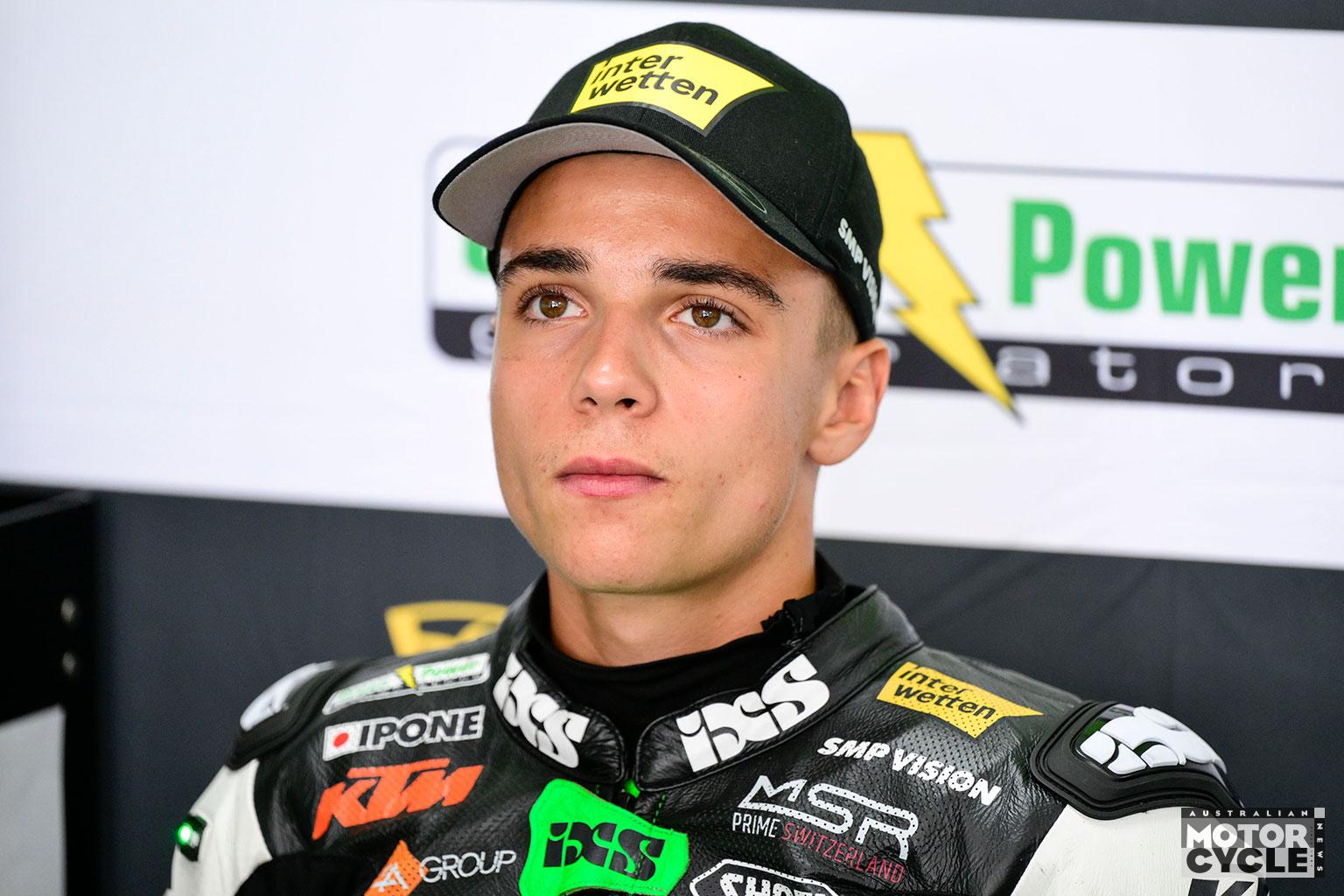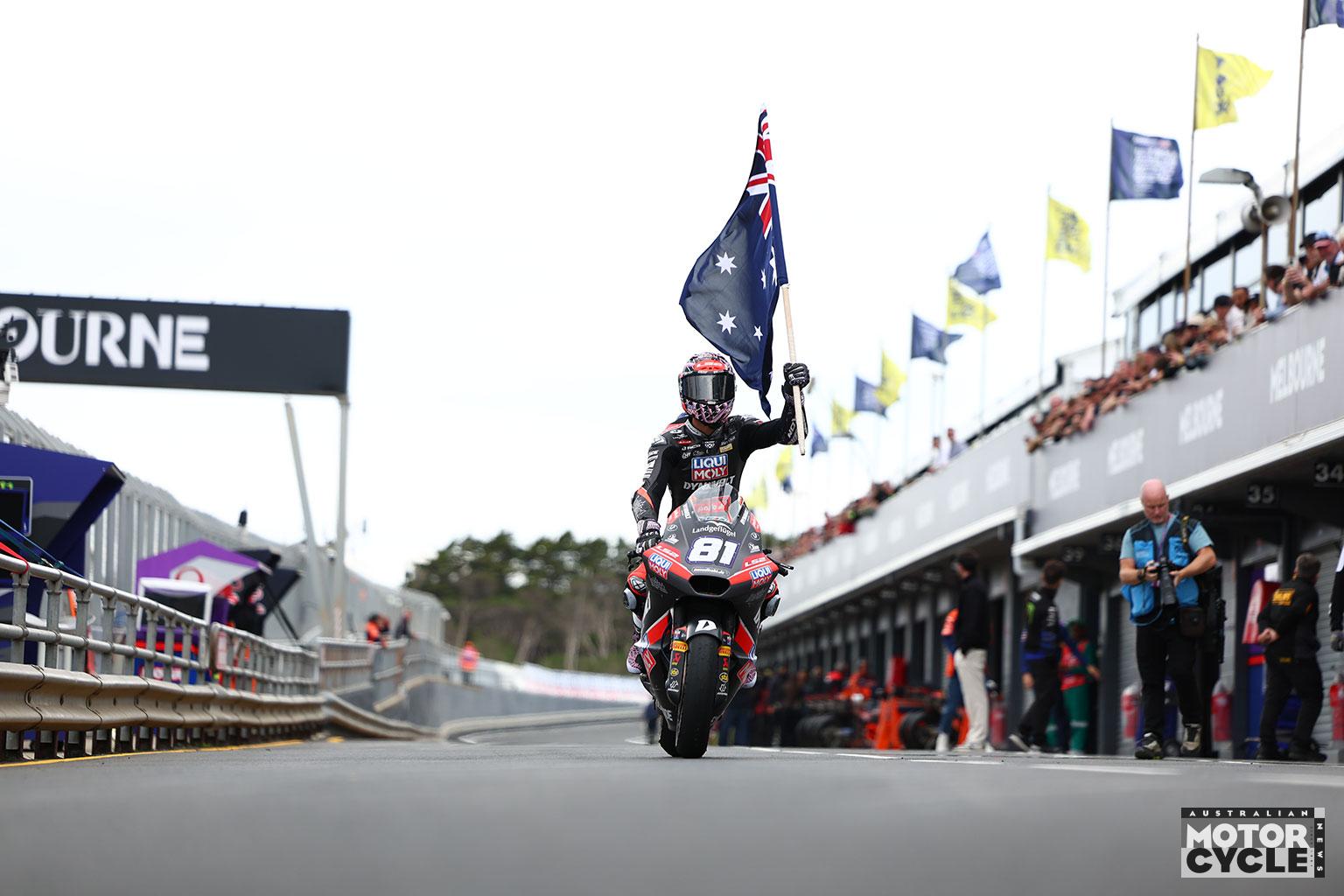We delve into the latest MotoGP tech and how it helps and hinders these amazing machines.
By many measures, the first half of the 2022 MotoGP has been deeply impressive. Be it the surprise of the assailants (Aprilia and Aleix Espargaro), or its underachievers (Honda, where are you?), no one can posit the series has been easy to predict. Thirteen different podium finishers in the season’s 11 races are testament to that.
What’s more, this year’s championship has been faster than ever – and not just by the small matter of tenths or hundredths of a second. Lap records have been broken at six of the 10 tracks the series had visited before. Race records have also taken a beating. Seven of the outings witnessed so far were quicker than what MotoGP machines had done before.
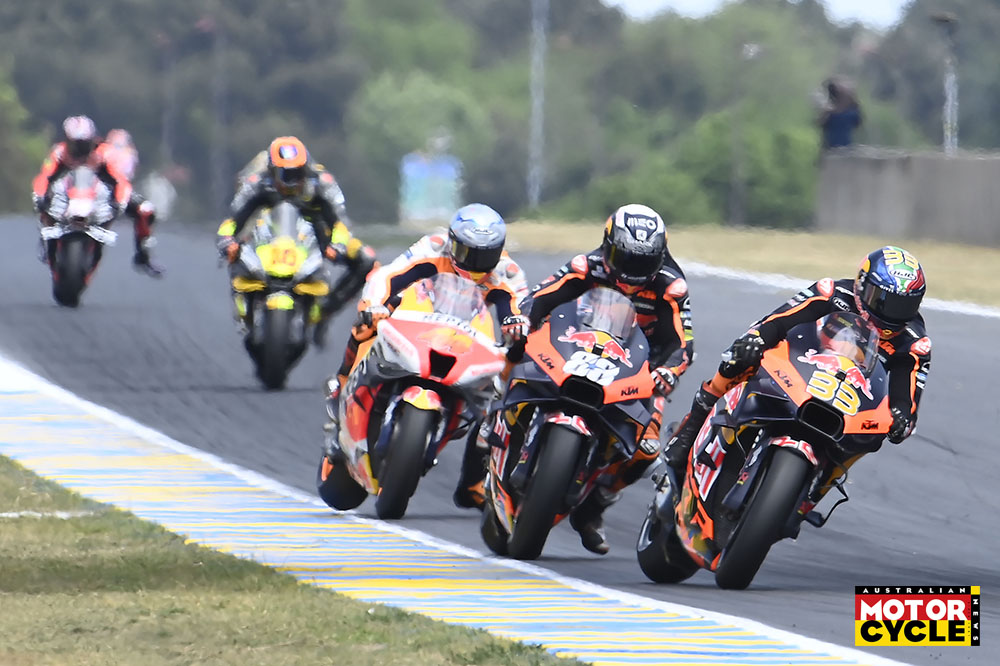
And quicker by quite some margin. Factors such as temperature and track conditions must always be taken into account. But some of the numbers make for wild reading. Take the season opener in Qatar for instance. The race-winning time was 10.7sec faster than the previous year. Similar differences were seen in Argentina (7.4sec quicker than the previous race record), Jerez (-5sec) and Assen (-9.8sec). And that’s before we look at Austin (-18.3s), and Le Mans, where the race record was cut by 19s (accepting 2020 and 2021 were affected by rain).
Yet speed doesn’t always translate to excitement. Anyone with even a passing interest in the sport will also have noted how these faster races have, at times, lacked the thing for which MotoGP has been best known in recent years: Overtaking. And lots of it. A number of races (Jerez, Barcelona, Germany) have been light on this aspect. But the French GP was where the spectacle was at its most concerning. There, five bikes circulated for much of the race within 2.7s. But where was the action, the fairing bashing or banging bars, the incidents that get trackside fans out of their seat?
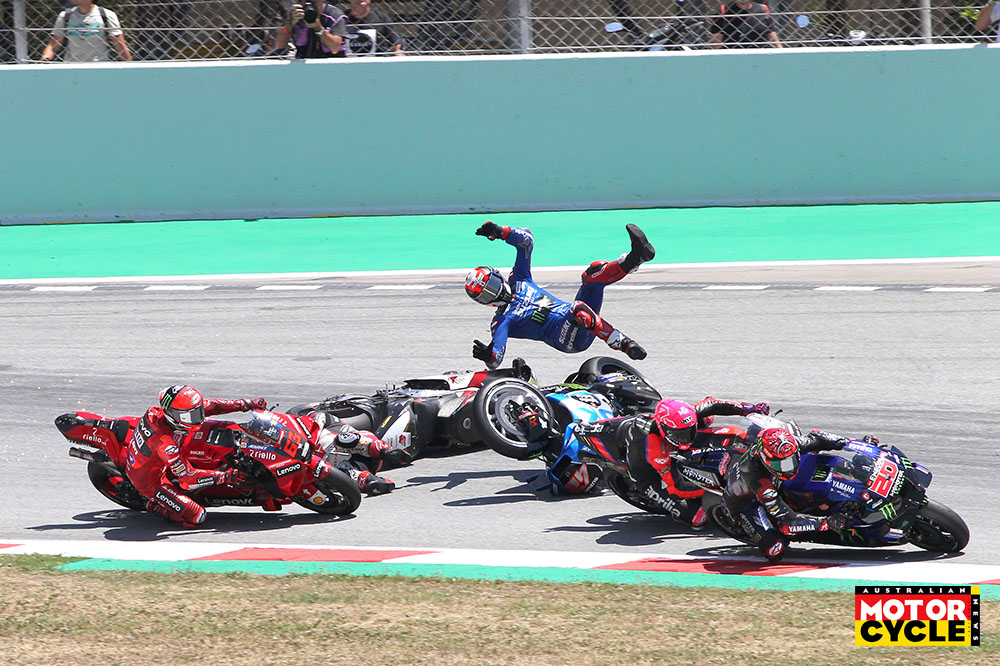
This is no simple coincidence. Let it be said that overtaking has not become extinct. There have been a number of enjoyable races this year, rich in scrapping and heroic overtakes, such as the Italian GP at Mugello. And there were occasions when riders have made epic comebacks. Alex Rins passed 13 riders on the first lap of the Portuguese GP. Marc Marquez rallied to sixth in Austin despite exiting the first turn last. And, most recently, Aleix Espargaro never performed better than at Assen, where he recovered from 15th to fourth.
But in those instances, each rider had the speed to run in first or second position, only to either qualify badly or endure early misfortune. The difference in speed to those riders they were passing was pronounced. It’s when margins are finer, and there is no great difference in race pace, it has become more difficult to get by the machine ahead than before. And unsurprisingly, this is intricately linked to the increased capabilities of MotoGP machinery and the development direction the class has taken.
As Paul Trevathan, crew chief to Red Bull KTM’s Miguel Oliveira, states, “If you look at the show, it’s a frustrating thing to see the guys not being able to pass like they can. We’ve made this vicious circle but we’ve done it to ourselves. The rules are there and we’ve taken them to the maximum.”
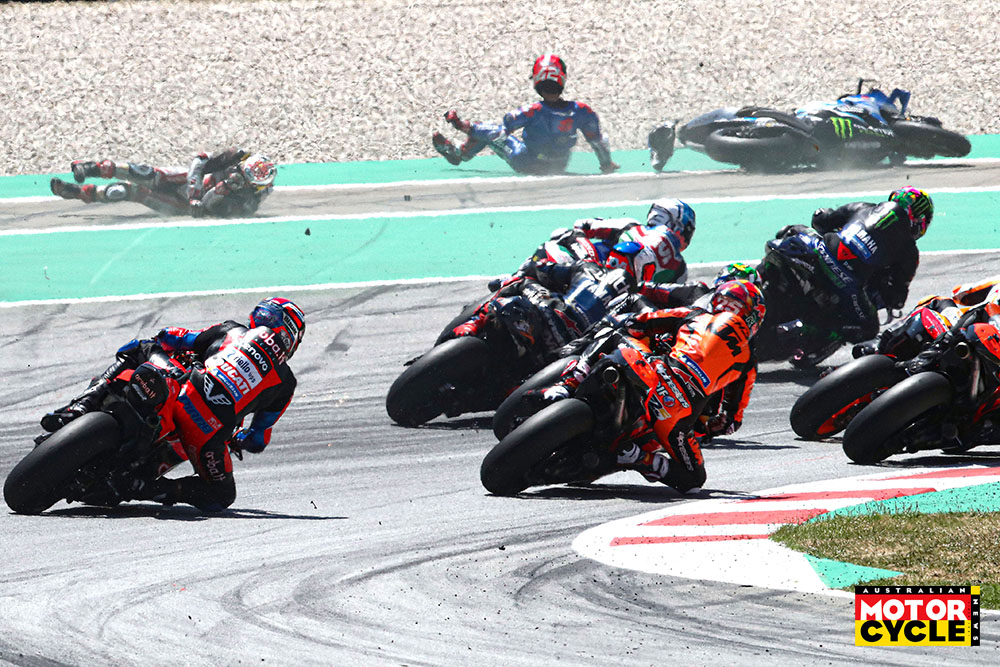
What’s changed?
There are a whole host of factors at play. But firstly, it’s worth stating that MotoGP has never been as competitive from a mechanical point of view. Currently, there is little to choose between the bikes made by Ducati, Aprilia, Yamaha and Suzuki. Even Honda and KTM have scored podiums this year. And satellite bikes in teams that were once the whipping boys in years gone by can fight for podiums on their day – see Enea Bastianini’s three race wins or on a year-old satellite Ducati.
“The class is so stacked,” continued Trevathan. “There is not a bad rider out there. And I absolutely believe there isn’t a bad motorcycle anymore.”
Michelin’s new rear-tyre profile, introduced for 2020, has largely allowed riders to go flat chat from lap one to the flag. Yet more pertinent is the advanced aero packages run by most of the current six factories. As is the fact every bike on the grid now runs a ‘ride-height device’, debuted by Ducati toward the end of 2019 and an instrument which lowers the rear of the machine mid to corner exit phase. Both are partly aimed at reducing wheelie. By keeping the front wheel planted, the load (and, therefore, stress) on the front tyre increases.
In particular, the ride height devices have changed braking markers and intensity. As the device lowers the bike’s centre of gravity, the machine pitches differently into corners than before. Riders can thus brake harder, and later, again adding stress to the front tyre.
Brembo, brake suppliers for every MotoGP manufacturer, has noted the increased demands on its carbon discs.
“The motorbikes are evolving very fast and not only in the engine or the standard parts, like the chassis, but also in aerodynamics,” said Andrea Bergami, a race engineer for Brembo. “That has a big influence on increasing the braking performance. In particular, we’ve seen the introduction of the ride-height device that helps the rider to brake later and harder.
“In the past the difference in braking performance from year to year was small – one, two or three percent. But in the last years we’ve seen braking performance increase by more than 10 percent year by year, thanks to aerodynamics and so on.
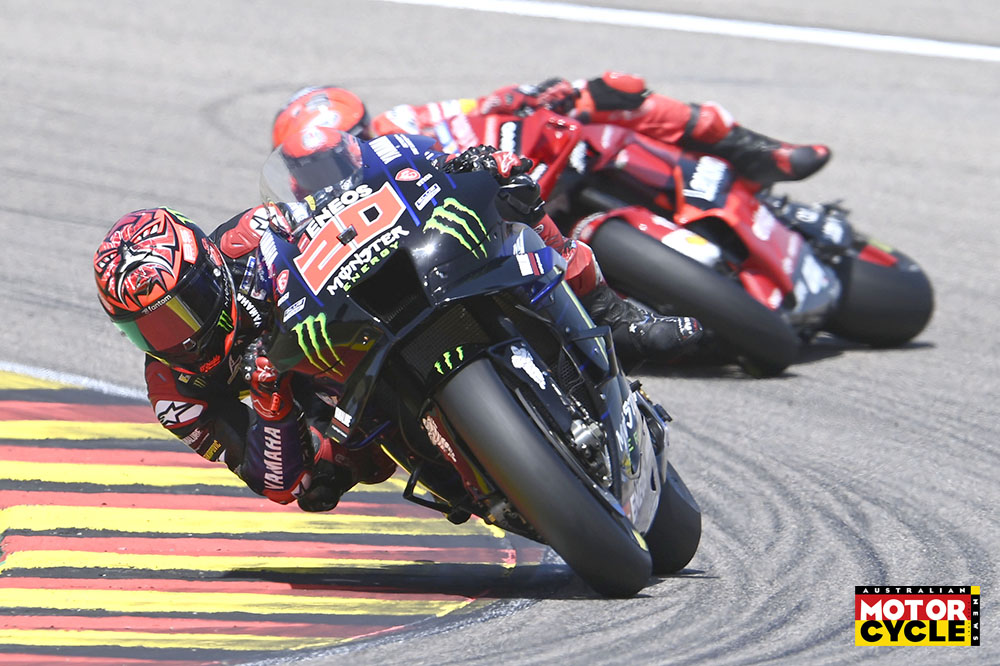
“The ride-height device lowers the centre of gravity so the rider is able to brake later and harder because the pitch limit of the motorbike has increased. One of the main limits of the ‘old’ bikes was the pitch limit – the centre was stable. You had the problem that over a certain pressure it was impossible to brake because the bike pitched. Now the pitch level is higher. If you put the centre closer to the ground, you can increase the braking pressure and brake later. Now the riders are always on the limit during the braking.”
So, if everyone is on the absolute limit in braking zones on similarly matched machines, it’s becoming increasingly difficult to make the difference.
“When you are braking, everybody is locking the front – everybody,” Andrea Dovizioso said in May. “If you are already on the limit because you are locking the front, this means you are not able to brake even two metres later.”

So much so, Brembo feels we are reaching the physical limits of riders stopping with forces up to 2G in heavy braking zones.
“After the races, some people ask why some riders feel pain or have arm pump problems during the race when last year the rider didn’t have problems,” Bergami explained. “It’s not only the braking. It’s a mix of the braking and the acceleration which creates this problem. All the evolution is going to the limit for a human.”
The same can be said of MotoGP machines exiting corners. Now tooled up with sophisticated shape-shifting devices, which keep the front wheel planted with the throttle wide open, the emphasis of factory engineers has shifted to prioritising performance on the acceleration phase over outright top speed.
“Now we measure how long it takes to go down a straight – it’s not about the top speed anymore, it’s using the acceleration phase,” adds Trevathan. “Before you maybe had amazing top speed but lost in acceleration. But at the end of the straight you could catch up. But those days are gone. Now the acceleration phase is so strong, that’s where you make your time up. Even Ducati isn’t hunting for the top-speed records anymore.”

How does this affect the show?
The advanced aerodynamics and ride-height devices aim to reduce wheelie, and put more load on the front tyre. Add in the dramatically increased braking forces entering turns and it’s easy to understand how the temperature of the Michelin’s front tyre increases, which in turn causes the pressure to rocket. This is not something that has passed the French tyre firm by.
“They put more wings, more aerodynamics so more load on the front. The ride height device, also the brakes – now they have bigger brake discs, so they brake harder and this generates heat which can go on the tyre,” Piero Taramasso, manager of Michelin’s two-wheel operation said. “The consequence is the pressure rises. You overheat the tyre and lose feeling and grip.”

KTM’s Trevathan agreed. “The influence on front tyres is massive,” he explained. “From 2020 to now it’s gone completely crazy. In the past, we (KTM) were maybe the masters of being able to use the hardest front tyre. Now we go to races and even Yamahas and Suzukis have to use the hardest compound. Now (almost everyone) sits between the medium and hard front tyre. And many times, the hard isn’t hard enough!”
The situation is manageable when a rider is alone on track as clean air helps to cool the rubber down. It’s also not such an issue in cooler temperatures, or at tracks like Mugello, where the heavy-braking zones are at a minimum. But when stuck in another rider’s slipstream on a hot track, “for one lap, half a lap even,” according to Jack Miller, the situation can become a nightmare to manage.
“The front tyre is the holy grail of the motorcycle world,” said Trevathan. “If a rider doesn’t have that feedback from the front, he doesn’t know where to push or how hard he can push.” So when the tyre overheats, the pressure can get out of control.”
Mooney VR46 Ducati rider Luca Marini says the rising pressures can effect the rider’s head as much as the feedback and handling.
“If the pressure rises more, it starts doing more front locking in braking, so it’s difficult to stop the bike,” he explained. “You have to brake a little bit earlier, then if the pressure goes very high you start to close the front in the middle of the corner, in the fast corners especially. It’s then difficult to have the feeling to try to overtake the rider in front of you because you start to think that you can crash if you exaggerate.”
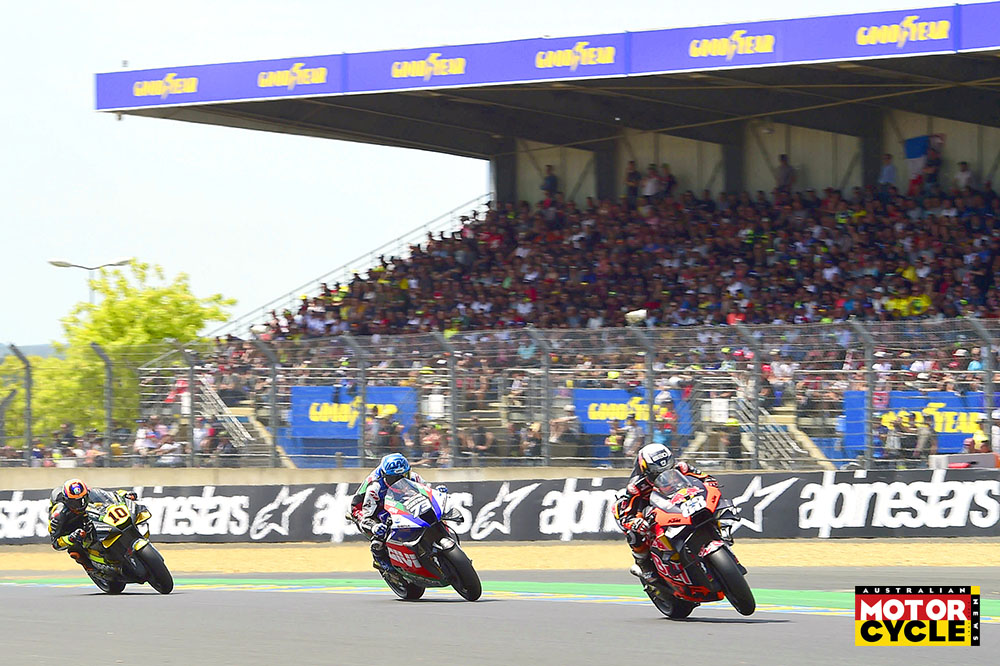
In the past, an overheating front tyre could be cured by simply pulling out of the slipstream, giving the rubber some fresh air to cool it. But that is currently problematic for two reasons: First, a MotoGP machine’s aero package disrupts the air behind, creating a wake, which unsettles the bike (this caused Alex Rins’ crash in France and Takaaki Nakagami’s in Barcelona). Second, the aero package alters the bike’s natural streamlined outline, greatly impacting top speed capabilities.
“In 2020, you’d just tell the rider to pull out of the slipstream to cool the tyre down. You’d do that on a few straights and it was fine,” Trevathan offered. “But now if you do that, you get the wake and the whole bike starts shaking. And you lose so much advantage now, because you have this extra downforce and extra drag. So (without slipstream) you lose top speed like you don’t believe. To even think about competing and attacking a guy in a corner, you have to tuck in behind him as much as possible. As soon as he brakes, you pull out. If you pull out before, you’re in the wake and it’s a horrible experience.”
Another impact of the aero packages is that downforce is dependent on whether you have clear air hitting the front of the bike, rather than being stuck in a slipstream.
“When you’re alone you use your aerodynamics to turn, you don’t push a lot the front tyre. When you are behind somebody then you don’t have the downforce and then you push more the steering, pushing more the tyre and then the temperature is going up. It becomes more critical every year.” Dovizioso concurred: “The winglets give you downforce. (But) if you have the slipstream, the downforce is the opposite way. This means you are not able to brake even where you brake alone, you have to brake early.”
With all these factors at play, it’s easy to envision why simply braking later than the rider ahead isn’t as straightforward as it once was.
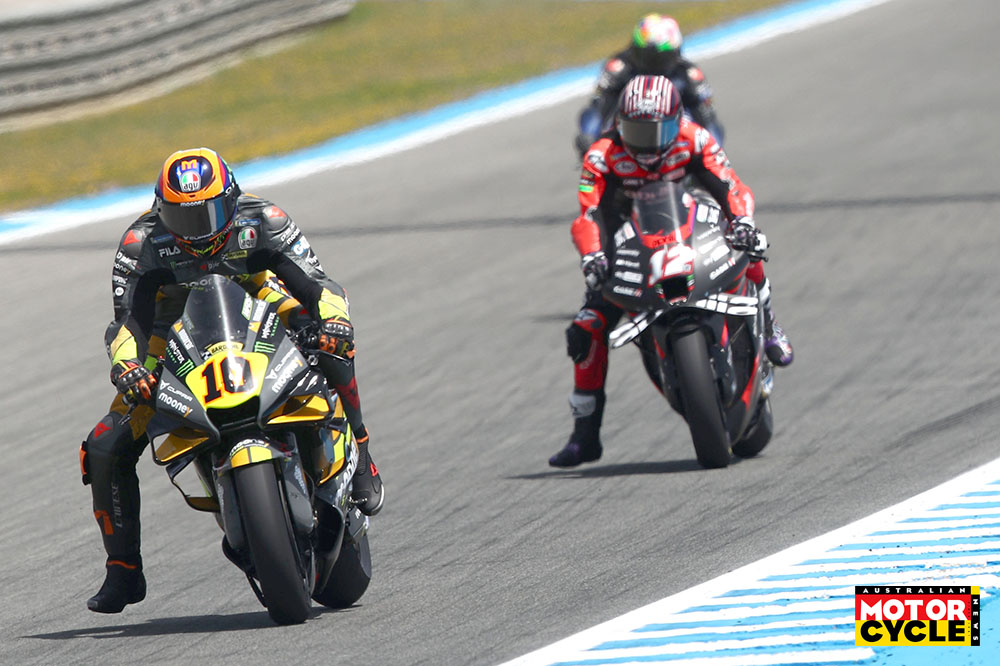
What’s the solution?
“We need a new front tyre. This is absolutely sure,” stated Trevathan. “But how the hell Michelin is meant to do that with the test days we have, with guaranteeing it works in different temperatures, different conditions, every asphalt is different, every bike is different… You’re talking about a bringing a new profile. You also have to bring new compounds. It’s a massive task.”
That was the opinion of Trevathan on the job at hand for the French tyre firm. And as he intimated, this is not a change that can be conjured up overnight. But Michelin does have plans to introduce a new front tyre, one with a redesigned profile, construction and compound for the 2025 season.
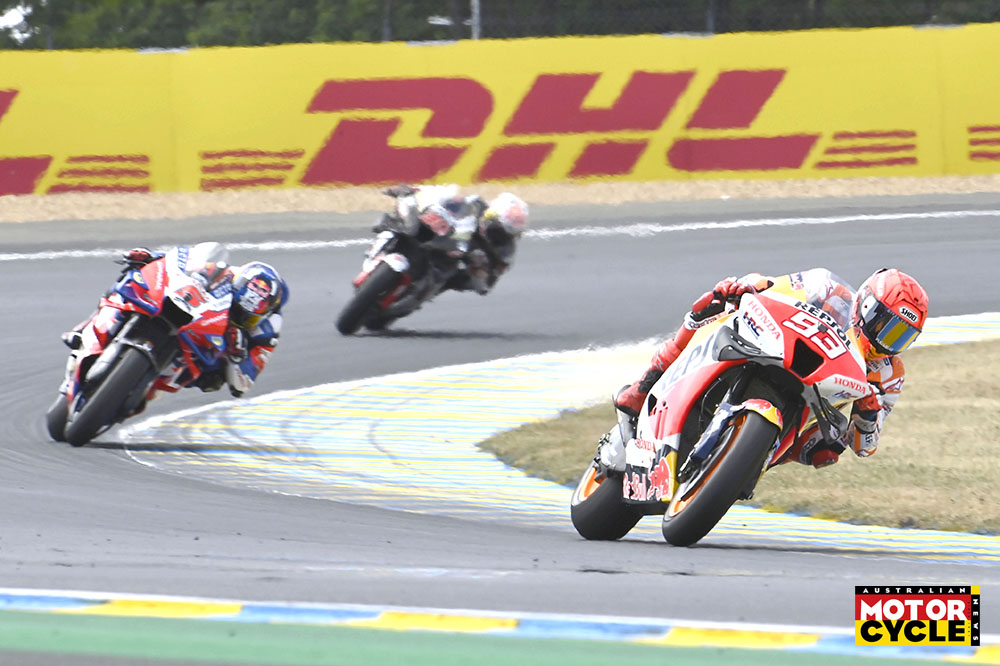
“We’ve started working on a new front tyre,” revealed Michelin’s Taramasso. “The prototype will be ready at the beginning of next season. We will test it in 2023 and 2024 to introduce it in the 2025 season. The front tyre is designed to support better this effort, this stress. It will work with lower tyre pressure. We’ll also increase the contact patch when you go into the braking zone.”
But even the Italian acknowledges the job at hand.
“Asking a manufacturer to test a new tyre, they feel they’re losing time. Also, with Covid, it was not easy to find a time and a place to test. I think it’ll be better next year. Now the big difficulty will be to validate the front. For a rear tyre, it takes just five tests. But you need much more time for a front tyre. This is what gives you the feeling.
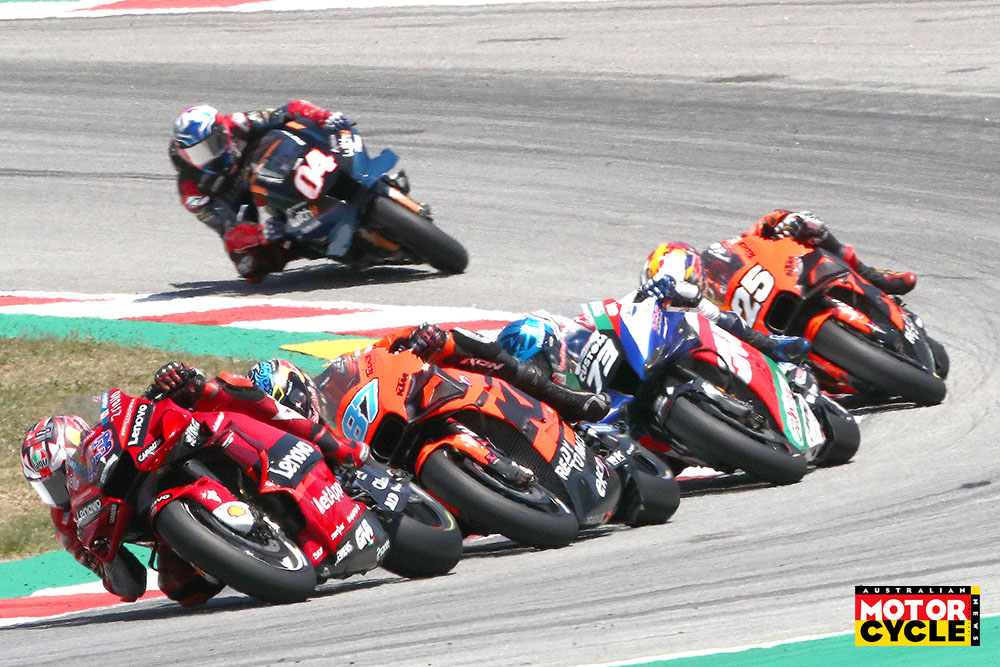
“Different riders have different needs. We’ll need a lot of tests in different tracks and conditions – the cold at Le Mans and the heat at Sepang, fast tracks like Mugello and slow ones like Valencia. Validating a front tyre is probably the most difficult thing for us. It’s a new concept of front tyre, quite different compared to this one. We’ll change the construction and profile. It’ll take a while to understand the tyre. Riders will have to adapt their style, the manufacturers will have to adapt their bikes. It’s a big challenge but I’m sure we’ll do it.”
Prior to that, there is a chance to reduce aero or ride height devices. But series organiser Dorna knows it won’t be able to do that without a fight with the factories, notably Ducati, currently propping up the championship.



